
| Publisher: | Algonquin Books | |
| Genre: | Women, Family Life, Literary, Marriage & Divorce, Fiction | |
| ISBN: | 9781616209155 | |
| Pub Date: | September 2020 | |
| Price: | $25.95 |
| Starred | Fiction |
by Peace Adzo Medie
Afi lives in a humble home in the Ghanaian city of Ho with her mother. Since Afi's father died, they are beholden to local businesswoman "Aunty" Ganyo for their jobs, their home and basic necessities like flour. So when Afi's marriage is arranged to Aunty's son Eli, she knows it is an honor, although she feels some trepidation at marrying a man she does not really know. "Elikem married me in absentia; he did not come to our wedding." And so her new life begins inauspiciously in Peace Adzo Medie's arresting first novel, His Only Wife.
Afi's task, according to the powerful Ganyo family, is to win her new husband away from "the woman" with whom he's already had a child, who is perceived to have stolen him away from his family. Afi resents being a pawn, but for her own reasons wishes to build a life of true love and commitment with Eli, whom she finds handsome and kind. She is out of her comfort zone, however, when she is installed in a luxury apartment in Accra, surrounded by food, clothing and modern conveniences she's never known--with Eli still absent.
Medie gives Afi a voice that winningly combines insecurity, wisdom and dignity. Fashion and food contribute to a cultural backdrop. Accra is a cosmopolitan city, while Afi's life in Ho was marked by privation and the importance of social and filial hierarchies. This story of a strong woman in a challenging and changing world will capture readers' hearts. His Only Wife is a memorable novel of personal growth and choosing one's own destiny. --Julia Kastner, librarian and blogger at pagesofjulia
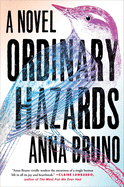
| Publisher: | Atria | |
| Genre: | Psychological, Women, Family Life, General, Literary, Fiction | |
| ISBN: | 9781982126957 | |
| Pub Date: | August 2020 | |
| Price: | $27 |
| Starred | Fiction |
by Anna Bruno
The entirety of Ordinary Hazards takes place in one evening at a local bar, "the kind of bar that doesn't exist in cities, a peculiarity of a small town that has seen better days." The lone woman in a ragtag bunch of locals there, Emma banters with the other regulars and dodges texts from her concerned friends, perched on a stool as two versions of herself: "the woman I am and the woman I used to be." As she vacillates between these women within herself, she recalls the career, the marriage, the friends, the son and the ambition that brought her to this precise moment in this bar in this town: 5 p.m. at The Final Final in upstate New York.
From the outset, it is clear that something about this situation is very wrong. That 5 p.m. moment is rife with tension, though it takes the completion of Anna Bruno's perfectly paced debut novel to understand why. Over the course of the next eight hours, through Emma's recollections and her interactions with the rest of the crew at The Final Final, it becomes clear that everything that brought Emma to this moment is now gone. The unnamed feeling bubbling beneath the surface of Emma's night of drinking is grief, and everything that accompanies it: blame, guilt, shame, sadness, anger, despair and a prevailing sense of "if only." Ordinary Hazards is a kaleidoscopic novel of the best variety, spinning into and out of itself as it explores grief, love and loss in ways that will haunt readers long past the last page. --Kerry McHugh, freelance writer

| Publisher: | Doubleday | |
| Genre: | Short Stories (single author), Small Town & Rural, General, Literary, Thrillers, Fiction | |
| ISBN: | 9780385544290 | |
| Pub Date: | August 2020 | |
| Price: | $26.95 |
| Fiction |
by Ron Rash
In 10 stories--including a sequel to his novel Serena that brings back the notorious villainess Serena Pemberton--poet and storyteller Ron Rash revisits his familiar southeastern hills for tales of avarice and decency, with characters concisely written but unforgettably vibrant.
In "Neighbors," Rebecca Penland is terrorized by former Confederates who arrive at her homestead to claim her provisions, or worse. But it's a truth that she needs to hide, not the salt and meats, and this from the neighbors she relies on to survive. Another war victim from another era offers helicopter rides over a Smoky Mountain region in "Sad Man in the Sky." When a man counts out cash and asks to fly over a remote ridge so he can drop presents for the kids he's forbidden to see, the pilot recalls other children, ones who once fled his chopper. In "The Baptism," the nefarious Gunter pressures Rev. Yates into a winter immersion baptism, speeding up his plot to marry for property. Justice wins.
In "Ransom," a college woman is kidnapped as revenge for her father's pharmaceutical company's practices, with ironic results. Every story has colorful characters and lessons fitting for their times and our own. But perhaps the most evocative is the titular "In the Valley," with Serena Pemberton's return to the North Carolina hills to log every tree and track down the child whose existence threatened Serena's fortune. Reading the novel is not a prerequisite for appreciating the chilling intensity of Serena's legendary malice. --Cheryl McKeon, bookseller, Book House of Stuyvesant Plaza, Albany, N.Y.
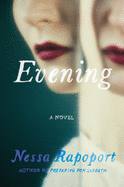
| Publisher: | Counterpoint Press | |
| Genre: | Family Life, Literary, Marriage & Divorce, Fiction, Siblings, Jewish | |
| ISBN: | 9781640094086 | |
| Pub Date: | September 2020 | |
| Price: | $26 |
| Fiction |
by Nessa Rapoport
When Eve returns home to sit shiva for her sister, a secret leads her to question what she thought she knew about their respective places in the family in this character-driven domestic drama. Tam was the successful sister; she was a well-known television journalist, married and the mother of two children before she died in her 40s. Eve, conversely, has a dissertation on a niche subject she still has not finished and a long-term relationship that she has kept so determinedly casual that she doesn't consider meeting at the airport, let alone marriage and children. Since they were teens, the one area where both agreed Eve was ahead was as the "sexy" sister. After Tam's funeral, Eve is given a note from her sister revealing something that a lover said to her--something that Eve knows couldn't have been said by Tam's husband.
Evening by Nessa Rapoport (Preparing for Sabbath) is an introspective drama about a woman reconsidering her family mythology. Eve contemplates the mysterious identity of Tam's lover, and who Eve is if Tam was not the devoted wife. And as she spends time with her divorced parents and the rest of her family, Eve also reexamines her conception of her parents' relationship and unearths the secrets of her grandmother's generation. Written in clear and thoughtful prose, Evening will keep readers entranced with the bonds and the competitions between sisters and the questions of what remains when loved ones are gone. --Kristen Allen-Vogel, information services librarian at Dayton Metro Library
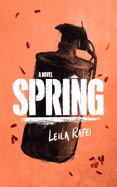
| Publisher: | Blackstone Publishing | |
| Genre: | General, Fiction | |
| ISBN: | 9781982672577 | |
| Pub Date: | August 2020 | |
| Price: | $26.99 |
| Fiction |
by Leila Rafei
Spring by Leila Rafei adeptly casts the Arab Spring uprising as a backdrop for upheaval in the lives of three ordinary people in her extraordinary debut novel.
In 2011, young people descend upon Tahrir Square in Cairo to demand a new government. "The chant rang out again and again. The people demand the fall of the regime." Sami, an Egyptian university student, dimly registers the protesters in the streets although his classes are canceled because of them. Jamila, a Sudanese refugee, is seeking permanent asylum. The violence in the streets is an enormous inconvenience as she moves around the city. Suad, Sami's mother, watches the uprising on television. As far as she's concerned, "in Tahrir there were only hooligans, young men with too much time on their hands and too little money in their pockets."
Sami breaches Islamic culture by living with Rose, his pregnant American girlfriend. On top of that guilt, he feels no ideological connection with the protesters and initially avoids Tahrir Square. Yet as his relationship with Rose ends along with the regime, he's drawn to it. Suad is a religious woman worried about Sami neglecting his faith. Meanwhile, Jamila cleans house for Sami and Rose, witnessing the privilege that they take for granted. She avoids the revolutionaries--their cause is not her cause--but she can't ignore them, either.
Spring is an impressive debut novel that combines the urgency of literary fiction with the timelessness of historical fiction. --Cindy Pauldine, bookseller, the river's end bookstore, Oswego, N.Y.
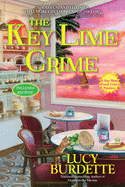
| Publisher: | Crooked Lane Books | |
| Genre: | Mystery & Detective, Cozy - General, Cozy - Culinary, Fiction, Women Sleuths | |
| ISBN: | 9781643853086 | |
| Pub Date: | August 2020 | |
| Price: | $26.99 |
| Mystery & Thriller |
by Lucy Burdette
It's nearly New Year's in Key West, Fla., and newlywed food critic Hayley Snow is juggling her new police officer husband, his enigmatic mother, her octogenarian roommate and an assignment to cover a local key lime pie competition. Things get stickier when Claudette Parker, one of the chef-contestants, ends up murdered. A Key West newcomer with a background in haute cuisine, Claudette had ruffled local feathers with her chichi pastries, including a key lime napoleon. But is that a reason for anyone to want her dead? Hayley and her mother-in-law make a surprising--and surprisingly effective--investigative team in Lucy Burdette's 10th Key West Food Critic mystery, The Key Lime Crime.
Burdette brings back the Key West local color that her readers have come to love: crowds of tourists and performers on Duval Street, ranging from drag queens to magicians to tarot readers. Hayley zips around on her scooter, checking out clues and trying to balance her work and personal responsibilities. Her friends and family, including her capable caterer mother and her cat-loving, sequin-wearing roommate Miss Gloria, also make repeat appearances. Hayley's reserved mother-in-law, Helen, is a surprising new addition. At first, she and Hayley seem like oil and water, but Claudette's murder provides an unexpected avenue for them to work together and come to appreciate each other's strengths.
Warm, witty and full of both delicious recipes and red herrings, The Key Lime Crime is a citrus-infused treat for foodies and mystery lovers. --Katie Noah Gibson, blogger at Cakes, Tea and Dreams
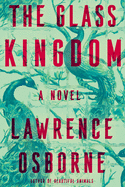
| Publisher: | Hogarth | |
| Genre: | Psychological, General, Literary, Thrillers, Fiction | |
| ISBN: | 9781984824301 | |
| Pub Date: | August 2020 | |
| Price: | $27 |
| Mystery & Thriller |
by Lawrence Osborne
With The Glass Kingdom, Lawrence Osborne (Hunters in the Dark) delivers a stylish novel of a woman and a city slowly unraveling. American Sarah Mullins awaits her next move after taking residence in a fading Bangkok apartment tower with only the clothes on her back and $200,000 in swindled cash--if she's not outfoxed by the building's residents first.
Quiet and unassuming, Sarah ingratiated herself as a personal assistant to a revered, elderly author before embezzling cash and fleeing the U.S. While the dust settles, Sarah escapes to Thailand and moves into the Kingdom, a complex of glass towers that once represented luxury and opulence, but now stands for faded glamour, where "the small signs of decay that were everywhere reassured her that here she would be removed from the world's radar." To mitigate her boredom, she joins three women--Mali, Ximena and Natalie--for alcohol and marijuana-fueled poker nights, but it's obvious to the women that Sarah is hiding something. And for two of the Kingdom's ever-present inhabitants--Goi and Pop, a maid and a maintenance worker--secrets are exchanged like currency, and Sarah presents an opportunity.
Osborne suffuses The Glass Kingdom with an atmosphere both ominous and languid. Bangkok is increasingly subject to suffocating power outages and civil unrest, and many of the Kingdom's residents, "squandered and guttering lives piled on top of one another in anonymity," are as trapped as Sarah, the American farang (the Thai term for white people) who thought she could slip by unnoticed. --Frank Brasile, librarian

| Publisher: | Grand Central | |
| Genre: | Psychological, Family Life, General, Suspense, Thrillers, Fiction | |
| ISBN: | 9781538718018 | |
| Pub Date: | August 2020 | |
| Price: | $27 |
| Mystery & Thriller |
by Kate Riordan
The Heatwave by Kate Riordan masterfully explores the complex relationship between a Frenchwoman, Sylvie Durand, and her daughters, the beautiful yet troubled Elodie, who died young, and Emma, a teenager living with her mother in London. Narrated by Sylvie and addressed to her surviving daughter, The Heatwave explores the central mystery in Emma's life: What happened to her older sister and why won't her mother talk about it? What is Sylvie hiding about the family's past at their former Provence home, La Rêverie?
The story begins in the summer of 1993. Sylvie returns to La Rêverie with Emma after a 10-year absence. She is determined to sell the family home despite its charming setting and the abundance of memories accumulated within its sun-scorched walls. The blinding white heat of the sun mingles with the dark smoke of nearby forest fires as Sylvie confronts Elodie's eerie presence lurking at La Rêverie, her shadow cast in the pool's dark jade water. In flashbacks, Sylvie shares episodes of Elodie's destructive, psychopathic personality, her fascination with fire and her dangerous jealousy toward Emma. Eager for distraction, Sylvie finds herself falling for Olivier, the sexy real estate agent who is clearly interested in more than a business relationship.
Riordan (Fiercombe Manor) expertly heightens momentum toward a delectably dark crescendo, bringing the enigma of Elodie's death to a shocking conclusion. Readers who are partial to mysteries set in far-off locales will enjoy the suspenseful escape of Riordan's third novel available in the U.S., an author with the distinction of completing Jane Austen's unfinished work, Sanditon. --Shahina Piyarali, writer and reviewer
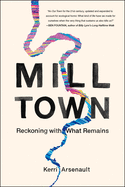
| Publisher: | St. Martin's Press | |
| Genre: | Biography & Autobiography, Nature, Environmental Policy, Environmental Conservation & Protection, Public Policy, Social Classes & Economic Disparity, Personal Memoirs, General, Social Science, Political Science | |
| ISBN: | 9781250155931 | |
| Pub Date: | September 2020 | |
| Price: | $27.99 |
| Social Science |
by Kerri Arsenault
The tiny town of Mexico, Maine, is one only a native could love. But for all the affection she expresses for her roots there, critic Kerri Arsenault writes anything but a love letter in Mill Town: Reckoning with What Remains. Instead, in an imposing work of narrative nonfiction that blends memoir with ecological exposé and socioeconomic analysis, she painstakingly, and often painfully, lays bare the tragedy that has stalked the town's hardworking and plucky, but ultimately exploited, citizens.
At the heart of Arsenault's story--the product of more than a decade of investigation--is the paper mill located across the Androscoggin River from Mexico, in the larger town of Rumford. Opened in 1902 and specializing in the production of coated paper for glossy magazines, the plant provided employment to three generations of Arsenault's family, descended from the proud Acadians, French Catholics who migrated to the area from the Canadian Maritime provinces in the 18th century.
But as Arsenault reveals, the foul odor that persistently blanketed the town was an ill wind. That smell, along with the massive amounts of toxics dumped into the river, triggered concerns about an alarming number of cancer cases that earned the region the unwanted title of "Cancer Valley." One of those victims was Arsenault's father, who died in 2014 after working in the paper mill for 45 years.
Mexico's melancholy story--one that's mirrored today in thousands of struggling small towns across the U.S.--comes to life in Arsenault's sympathetic, but unfailingly clear-eyed, telling. --Harvey Freedenberg, freelance reviewer

| Publisher: | Oxford University Press | |
| Genre: | Biography & Autobiography, History & Criticism, Direction & Production, Film, Genres - Horror, General, Performing Arts | |
| ISBN: | 9780197515327 | |
| Pub Date: | September 2020 | |
| Price: | $34.95 |
| Performing Arts |
by Dan Callahan
Dan Callahan's The Camera Lies: Acting for Hitchcock offers an insightful, succinct and engaging film-by-film analysis of the master filmmaker's work. This impressive, thoughtful and delightfully opinionated book rivals Donald Spoto's definitive guide The Art of Alfred Hitchcock. The subtitle undersells the scope of Callahan's attention. Yes, it looks at how Hitchcock worked with actors, but Callahan (The Art of American Screen Acting) offers a wealth of information and gossip on how Hitchcock also partnered with outstanding co-writers, editors, composers and cinematographers.
Hitchcock was uncharacteristically modest about working with actors. He notoriously said, "All actors should be treated like cattle." But, Callahan reminds readers, "Hitchcock films are filled to bursting with memorable performances, great performances... and not just from leading players." Jimmy Stewart (who starred in several Hitchcock films including Rear Window) said Hitchcock "preferred to let the actor figure out things for himself. He refers to his method as 'planned spontaneity.' " But if Hitchcock wasn't getting what he wanted, he stepped in. According to Callahan, in Vertigo, Hitchcock told Kim Novak "exactly how he wanted her to say her lines, down to the breath (or lack of it) and rhythm." Although Callahan occasionally points out dated or sexist details in the films, he also explains that Hitchcock's films remain fresh today because he constantly fought against censorship and cleverly snuck a lot of gay and sexual innuendo into many of his films.
Hitchcock buffs will devour this fresh and adroitly written guide. The Camera Lies is an illuminating mixture of scholarly reference and good gossip. --Kevin Howell, independent reviewer and marketing consultant

| Publisher: | Balzer & Bray | |
| Genre: | Law & Crime, Novels in Verse, Social Themes, Young Adult Fiction, Prejudice & Racism | |
| ISBN: | 9780062996480 | |
| Pub Date: | September 2020 | |
| Price: | $19.99 |
| Starred | Children's & Young Adult |
by Yusef Salaam, Ibi Zoboi
Punching the Air by Ibi Zoboi (American Street) and activist Yusef Salaam of the Exonerated Five tells the unforgettable story of Amal Shahid, a teenager incarcerated for a crime he did not commit. Zoboi and Salaam masterfully join forces in this mesmerizing novel-in-verse. The poems--sharp, uninhibited and full of metaphors and sensory language--quickly establish Amal's voice, laying bare the anger, despair, hope and talent it holds.
Part one of the three-part novel begins with16-year-old Amal in a courtroom awaiting a verdict on his involvement in a fight that left another boy in a coma. Where Amal came from and who he really is do not matter, nor does the truth about what happened that night: the only fact holding weight is that he is Black and the other boy is white. Amal is falsely convicted of aggravated assault and battery. Part I ends as he rides a bus to the juvenile detention center where the rest of the novel is set. In juvenile detention, Amal survives through art and poetry: "I bang out a rhythm/ make the door a drum/ make my fist a mic/ make my words a bullhorn/ make my truth the air."
While Zoboi and Salaam create a young protagonist who is truly exceptional, they simultaneously show that his situation is far from exceptional in the U.S. Amal's interactions with other boys in jail show the disproportionate impact of police brutality, mass incarceration and biased legal systems on Black young men. Amal's experience of abuse by the system, as well as his peers', incites raw outrage, but his artistic self-expression offers a subtle yet significant kind of hope. It is a hope borne of anger, that knows the full depths of injustice and still dreams of a better future. --Sylvia Al-Mateen, freelance reviewer and editor

| Publisher: | Random House | |
| Genre: | Royalty, Romance, General, Girls & Women, Young Adult Fiction | |
| ISBN: | 9781984830210 | |
| Pub Date: | September 2020 | |
| Price: | $18.99 |
| Children's & Young Adult |
by Katharine McGee
In this riveting sequel to American Royals, Katharine McGee spins familial and romantic tension, dark secrets and political drama around four remarkably motivated young women.
Beatrice Washington, America's first queen, is prepared to assume her deceased father's throne. Congress, however, is "twisting the Constitution" to bar her reign until she marries palace-approved Teddy Eaton, sister Sam's love interest. But Sam has moved on; that is, to fake dating Lord Marshall Davis, hoping to make Teddy jealous. The tabloids pounce on the relationship, "a scandal" because Marshall is Black and the royal family is white. Prince Jefferson's ex, Latinx Nina Gonzalez, is avoiding the royals for exactly this reason. Except she starts dating Jefferson's best friend, an event Daphne Deighton, Prince Jefferson's other ex, orchestrated in her quest to win back the prince--and become a princess. But Daphne's plot is threatened by her friend Himari, who has just awoken from a coma Daphne accidentally caused. As each girl questions her next steps, the royal wedding approaches.
Entertainingly interconnected alliances, romances and betrayals among compellingly flawed characters ignite this series with its indefatigable spark. None of the young women think alike, ensuring that, as their alternating perspective chapters mount with intense revelations, the four transform differently. Grappling with their fears--Beatrice, "most alone when she [is] most surrounded by people"; Sam, "so much less than Beatrice"; Nina, "hardly dar[ing] to want things"; and Daphne, not "real unless someone else's eyes [are] on her"--each girl turns brashly, unhesitatingly into the woman she believes she must become.
With love and rivalries, a heady pre-wedding atmosphere, and a country's future poised to change, American Royals II: Majesty is an indulgently fun escape. --Samantha Zaboski, freelance editor and reviewer
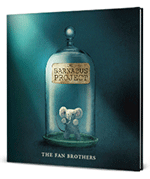
| Publisher: | Tundra Books | |
| Genre: | Pets, Friendship, Survival Stories, Animals, Social Themes, Juvenile Fiction, Action & Adventure | |
| ISBN: | 9780735263260 | |
| Pub Date: | September 2020 | |
| Price: | $18.99 |
| Children's & Young Adult |
by Terry Fan, Eric Fan and Devin Fan
According to half-mouse/half-elephant Barnabus, "Nothing is impossible." In this spectacularly illustrated and remarkably touching picture book by the Fan Brothers (plus one), Barnabus displays the importance of following your dreams no matter what--even when the world sees you as a "Failed Project."
Barnabus and his compatriots--including Bumble Bear, the Bottle Mogs, Lite-Up Lois, Quirt and several others--have been genetically engineered to be perfect pets. Sadly, none of them has made the cut. Barnabus, for one, isn't fluffy enough and his eyes are too small. Sinister-looking engineers known as the Green Rubber Suits keep the creatures in jars ominously stamped FAIL in a lab hidden far below the Perfect Pets Shop. Life isn't too bad in the lab, but Barnabus does sometimes wonder "about the world outside of his little bell jar." His cockroach friend Pip tells the would-be pets what it's like out there, waxing poetic about a "sparkling silver lake, green trees, and mountains that reach... all the way to the sky, lit with their own stars" (i.e., urban high-rises). But it's not until Barnabus learns what happens to failed projects that he decides to take action, and what follows is an adventure to rival all picture-book adventures.
Terry Fan, Eric Fan and Devin Fan bring to light (literally and explosively, as readers will see) an empowering story about the value of finding one's people and working together--appropriately enough, as they are three Canadian brothers who collaborated digitally and on paper to create The Barnabus Project. Terry Fan and Eric Fan, known professionally as the Fan Brothers, have worked together on titles such as The Night Gardener, Ocean Meets Sky (a 2019 Zena Sutherland Award for Children's Literature and shortlisted for the Kate Greenaway Medal), The Antlered Ship (by Dashka Slater) and The Darkest Dark (by astronaut Chris Hadfield). This is their first picture book collaboration with brother Devin.
Their artwork, rendered in graphite and colored digitally, seems animation-ready, its energetic quality giving the distinct impression of motion. In fact, the Fans' quirky characters wouldn't be out of place in a Hayao Miyazaki (My Neighbor Totoro) film. Visual treats are in store on every page for keen-eyed readers, the youngest of whom may enjoy looking for Pip on nearly every spread or seeing how the smaller or less ambulant critters hitch rides with others (like spotted, raspberry-colored Mushroom Sloth, who hangs from a glass thermometer carried by the long-legged Stick One and Stick Two). Even more careful perusal will reveal subtly changing details in recurring scenes, such as the position shifts among the pedestrians on the street, a black cat moving from doorway to sidewalk, and pigeons perched on the rooftop on one spread having taken off to flutter over the building on the next. Certain elaborate settings--the "perfectly ordinary street" of the pet shop, the cross-section of the maze-like underground tunnels, the shelves of bell jars and imperfect pets--are depicted with absorbing detail, inviting repeated returns for new surprises. Adults, too, have much to be entertained by, such as hilariously quotidian details like a man reading a newspaper in what must be the underground staff room (vending machine, water cooler and lockers nearby) that is at the center of the massive lab tunnels. The Fan brothers seem to enjoy taking a sly jab at a world where genetically modified products have become the norm: brilliantly hued and polka-dotted "perfect" pets mingle among more traditional cats and dogs on the street.
Although the book is packed with action and poignance and not a word or picture is wasted, three moments stand out as watersheds. One is when Barnabus blasts apart his jar with a "BWAAHHH!!" from his tiny trunk, setting the failed pets' escape plan in motion. Another is when the gang discovers, on the one vertically oriented page of the book, a monstrously large tank with a single eye peering out of a porthole. The escaping pets, petrified, want to run. But Barnabus stops them. "It's a Failed Project," he says. "Just like us." The next pages are evocative: the group works to free the creature within, led by the sweetly fanged purple octopus-like Wally the Ripple, who wraps his eight legs around the wheel that opens the tank. Meanwhile, Green Rubber Suits approach threateningly from a tunnel. The third watershed is when Barnabus, racing out of the pet shop, pauses to look at an orderly row of the "FULLY TRAINED!" perfect pets in all their fluffy, big-eyed--and packaged--glory. "It was almost like looking in a mirror, except Barnaby's eyes were bigger, and his fur was like cotton candy. He was perfect." But Barnabus continues on to join his friends: "He might not be perfect... But he was free!" By working together to escape the tyranny of perfection, Barnabus discovers the most important thing: He likes himself--and his friends--just the way they are. --Emilie Coulter